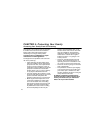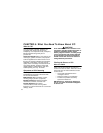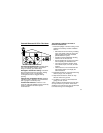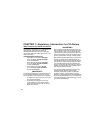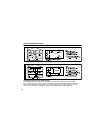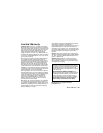
24
DIFFERENT TYPES OF SMOKE ALARMS
Battery operated units: Provide protection
even when electricity fails, provided the
batteries are fresh and correctly installed.
Units are easy to install, and do not require
professional installation.
AC powered units: Can be interconnected so
if one unit senses smoke, all units alarm. They
do not operate if electricity fails. Units must be
installed by a qualified electrician.
AC powered units with battery back-up:
Can be interconnected so if one unit senses
smoke, all units alarm. They will operate if
electricity fails, provided the batteries are fresh
and correctly installed. Units must be installed
by a qualified electrician.
Units for the hearing impaired: Include a
visual alarm and an audible alarm horn, and
meet the requirements of the Americans With
Disabilities Act. BRK Electronics
®
smoke
alarm model 100S is an AC powered unit that
has an 85 decibel alarm and a 177 candela
strobe light, which flashes rapidly when the unit
is in alarm. These units can be interconnected
so if one unit senses smoke, all units alarm.
They do not operate if electricity fails. Units
must be installed by a qualified electrician.
All these units are designed to provide early
warning of fires if located, installed and cared
for as described in the user’s manual, and if
smoke reaches them. If you are unsure which
type of unit to install, refer to Chapter 2 of the
National Fire Protection Association (NFPA)
Standard 72 (National Fire Alarm Code) and
NFPA 101 (Life Safety Code). National Fire
Protection Association, One Batterymarch
Park, Quincy, MA 02269-9101. Local building
codes may also require specific units in new
construction or in different areas of the home.
IONIZATION SMOKE ALARMS
These units are generally more effective at
detecting fast, flaming fires which consume
combustible materials rapidly and spread
quickly. Sources of these fires may include
paper burning in a wastebasket or a grease fire
in the kitchen.
PHOTOELECTRIC SMOKE ALARMS
These units are generally more effective at
detecting slow, smoldering fires which smolder
for hours before bursting into flame. Sources of
these fires may include cigarettes burning in
couches or bedding.
For maximum protection, use both types of
smoke alarms on each level of your home.







